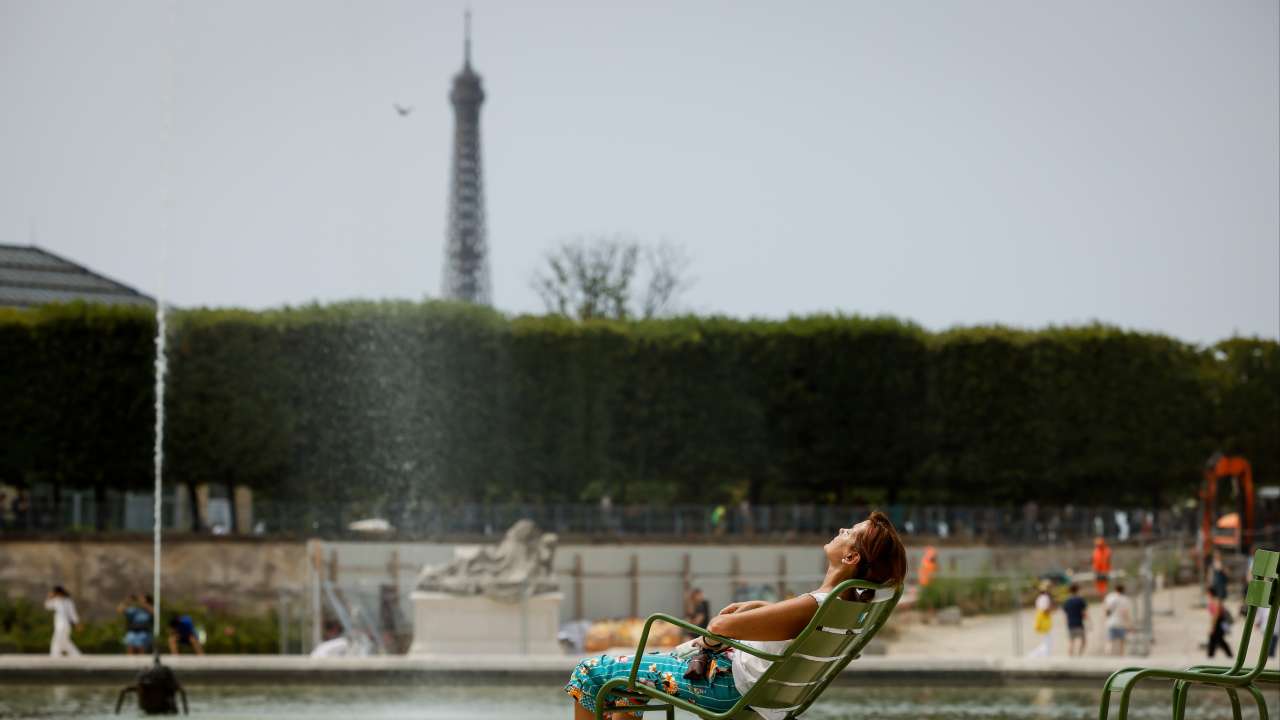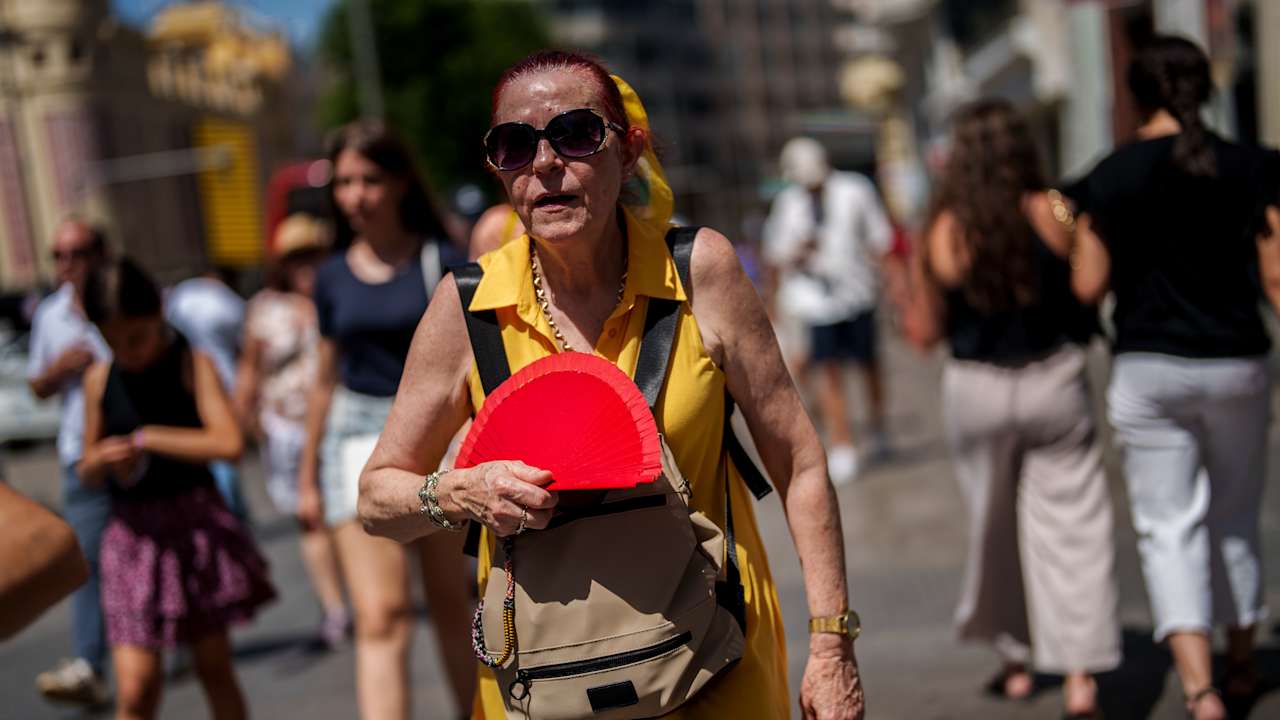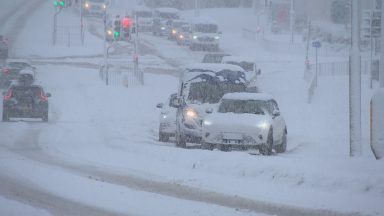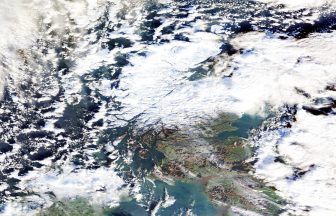One person has died and multiple people have collapsed in Italy in the sweltering heatwave
With school holidays on the horizon, hundreds of thousands of Brits are expected to flock to popular tourism destinations such as Spain and Greece.
But instead of balmy temperatures, they will be met with a blistering heatwave gripping Europe.
Known as Cerberus in Italy, and Kleon in Greece, the high pressure zone has led to deadly land surface temperatures of over 60C in the Spanish region of Extremadura.
Land surface temperature is a measurement of how hot the land is to the touch- which is different from air temperature usually given in weather reports.
Holiday hotspots including Austria, France, Switzerland and Germany have also documented record-breaking temperatures.
The searing heat has lead to the Benidorm tourism boss warning: “it will soon be too hot to lie on the beach in July and August,” during an interview with ITV’s Good Morning Britain.
But where has this heat come from, where is it going?
Plus with multiple people collapsing in Rome from the heat, what are tourists supposed to do if their week in the sun turns dangerously hot?

Why is it so hot?
There are three key factors.
The heatwave is being caused an anticyclone, this is an area of high pressure.
It happens when cool air from higher up in the atmosphere sinks down, as it sinks, the pressure rises and the temperature does too, this causes hot, warm and dry weather.
Meteorological experts are also putting the soaring temperatures in Europe – and more generally across the world – down to El Niño.

In its simplest form, El Niño Southern Oscillation is the redistribution of heat into the central southern Pacific Ocean which drives the weather patterns across the Pacific and around the globe, ITV News Weatherman Chris Page explains.
A typical El Niño temporarily adds about 0.2C to average global temperature according to the Met Office.
But this temperature rise is “dwarfed by the 1.2C that we have seen from climate change,” says Jeff Knight a Met Office climate expert.
He predicts human-induced warming will lead to a new global temperature record, which is likely to be seen before the end of next year.
How long will the European heatwave last – and will it reach the UK?
The heatwave will grip the Mediterranean region over the next two weeks with temperatures above 35–40C, says the World Metrological Organisation.
In the Middle East and southeastern Türkiye and in North Africa, the forecaster expects it to heat up to 45C.
Grahame Madge, spokesman for the Met Office, said: “The heatwave conditions which are affecting parts of southwest Europe and northwest Africa are expected to extend eastward eventually reaching the Middle East later in the week.
On Wednesday night, temperatures are expected to fall due to winds in the north and east of Spain.
“In southeast and southern Andalusia, hot winds blowing from the interior will cause temperatures to soar,” according to meteorologist Rubén del Campo,of Spain’s national weather agency.
The heatwave also will cause other European countries to swelter through the weekend.
In Italy, 10 cities were put on high heat alert for older people and other vulnerable populations from Bolzano in the north extending southward to Bologna, Florence and Rome.
Temperatures are expected to reach 40C on the Sardinian inland Wednesday.
German’s weather forecaster, DWD, predicted the mercury could rise to 35C with high humidity particularly in the west of the country Saturday.
The heat will spread eastward by Sunday, reaching highs of 37C, it said.
How holiday makers should stay safe during Europe’s heatwaves
While people may be seeking sunshine drenched holidays, the hot weather is becoming increasingly dangerous.
More than 61,000 deaths were linked to last summer’s heatwaves in Europe, according to a study published on Monday.
The Mediterranean region, which is currently sweating under the heatwave’s sunny glare, had the highest death rate, with Italy, Greece and Spain being hit the hardest.
There were 3,469 heat-related deaths in the UK, or 52 deaths per million people, last summer.
Red heat alerts have been put out across Europe, meaning the temperatures could cause a danger to life.

Authorities in Greece banned access to nature reserves and forests to reduce the risk of wildfires, while municipalities were opening air-conditioned areas in public buildings for people to shelter from the heat.
During hot weather the Met Office advises people to keep out of the sun, especially between the hours of 11am – 3pm, keep hydrated and stay indoors with curtains drawn to block the light.
People are also advised to watch out for signs of heatstroke including hot, dry skin or excessive sweating, confusion, loss of consciousness, unresponsive, seizures or fits and a very high body temperature.
Call 999 – or the emergency number of the country you are holidaying in- if someone shows symptoms of heatstroke, including feeling unwell after 30 minutes of resting in a cool place.
Follow STV News on WhatsApp
Scan the QR code on your mobile device for all the latest news from around the country






























